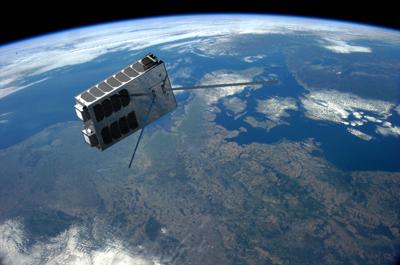Urgent: SFL Missions Secures AISSat-4 Contract for Norway’s Maritime Monitoring

UPDATE: The Norwegian Space Agency (NOSA) has just awarded a critical contract to **SFL Missions Inc.** for the rapid development of the **AISSat-4** maritime ship tracking microsatellite. This project is set to launch in less than **one year**, targeting an urgent enhancement in Norway’s maritime situational awareness capabilities.
This contract, announced on **July 29, 2025**, emphasizes the immediate need to expand operational capacity within Norway’s maritime monitoring system, which plays a vital role in ensuring safety and security in Norwegian waters. The AISSat-4 will bolster the existing network, providing enhanced tracking and data capabilities critical for maritime operations.
Why this matters NOW: The AISSat-4 is essential for improving Norway’s ability to monitor ship movements, particularly as maritime traffic continues to increase. With global shipping demands rising, enhancing tracking technology is crucial for environmental protection and security.
Details surrounding the project highlight SFL Missions’ expertise in developing cutting-edge microsatellites. The AISSat-4 will incorporate advanced technologies to ensure precise ship tracking, further solidifying Norway’s position as a leader in maritime technology and safety.
As the launch date approaches, stakeholders will be keenly watching the progress of this initiative. SFL Missions Inc. is expected to deliver updates on the development phases, ensuring transparency and engagement from maritime authorities and the public alike.
Next Steps: The team at SFL Missions is gearing up to initiate the development process immediately. Expect further announcements regarding technical specifications and timelines as the project unfolds. This development not only impacts maritime operations in Norway but also sets a precedent for similar initiatives globally.
Stay tuned for more updates on this significant advancement in maritime technology. As the situation develops, the implications for safety and efficiency in shipping could be profound.






